3-7-77: A History of Montana's Most Ominous Numbers...
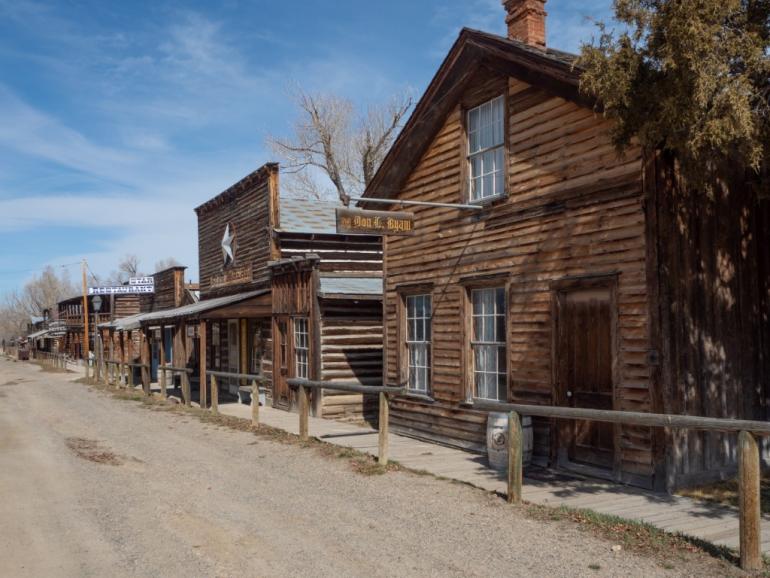
“Vigilante Trail 3-7-77” highway signs greet visitors to Virginia City. And 3-7-77 is part of the Montana Highway Patrol’s logo. But what do we know of 3-7-77’s origin?
I’d driven to Virginia City to meet with several well-informed local folks to get their take on 3-7-77—not that I needed reason to visit the area. It feels like going home; my roots run deep there.
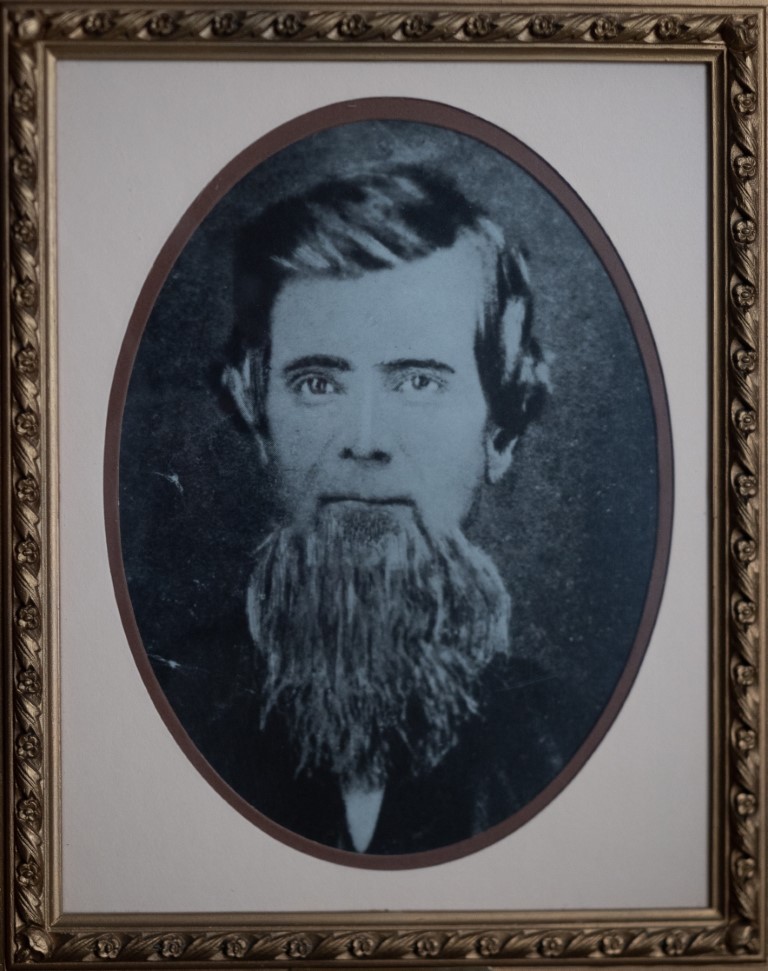
I’m descended from Dr. Don Lorenzo Byam, a judge at the area’s first criminal trial and my great-great-great grandfather. As a Vigilante, he offered his home in Nevada City as a meeting place. If his walls could talk, I’ve always thought maybe we’d know the answer.
“A popular theory is it’s the measurements of a grave,” Evalyn Johnson, author and archivist at the Thompson-Hickman County Library in Virginia City, said. “But no one knows for sure,” local writer Angela Mueller added.
“That’s right,” Evalyn said. She’s pored over historical records for 20-plus years. “If it were written anywhere, I would have found it. I really think it is a Vigilante code. A secret code.”
“Like meeting and potluck dinner tonight at the lodge?” I joked.
They were polite enough to chuckle.
“More like a warning for the bad guys to get out of town: the Vigilantes are meeting, and when we do, you’ll be sorry you’re still here,” Evalyn said.
With that, we bounced popular theories off each other, sitting in the shade of Evalyn’s 1879 home.
For more than 100 years, the meaning of 3-7-77 has been the subject of debate and a dozen or more articles. To help you choose your favorite theory, here’s the background:
Dr. Byam planned to trade his stethoscope for a pickax and strike it rich. The area’s first gold strike in Bannack lured Byam from Colorado. Bandits jumped Byam’s claim, so he moved with his family to Nevada City shortly after gold was discovered in Alder Gulch on May 26, 1863.
Outlaws followed the money. While Dr. Byam was building his two-story log home and office on what is now Highway 287, a group of bandits, called the Innocents, was forming and seemed to have insider knowledge of gold shipments out of Alder Gulch to the banks in Bannack.
With all his attention focused on the Civil War, President Lincoln had little time to send law enforcement to the area. As robberies and murders escalated, residents tired of the outlaws and soon took matters into their own hands by electing a sheriff and establishing miners’ courts.
Dr. Byam and Judge Wilson served as judges during the area’s first criminal trial against George Ives. On December 21, 1863, the jury and 1,500 bystanders found Ives guilty of murdering a young Dutch immigrant, Nicholas Tiebolt. With a noose around Ives’s neck, Dr. Byam said, “Men, do your duty.” Ives was hanged from makeshift gallows without delay.
Days later, the citizen’s Vigilance Committee formed to deliver swift justice. Dr. Byam joined the Vigilante group in Nevada City, offering his upstairs room as a meeting place.
And now for the theories:
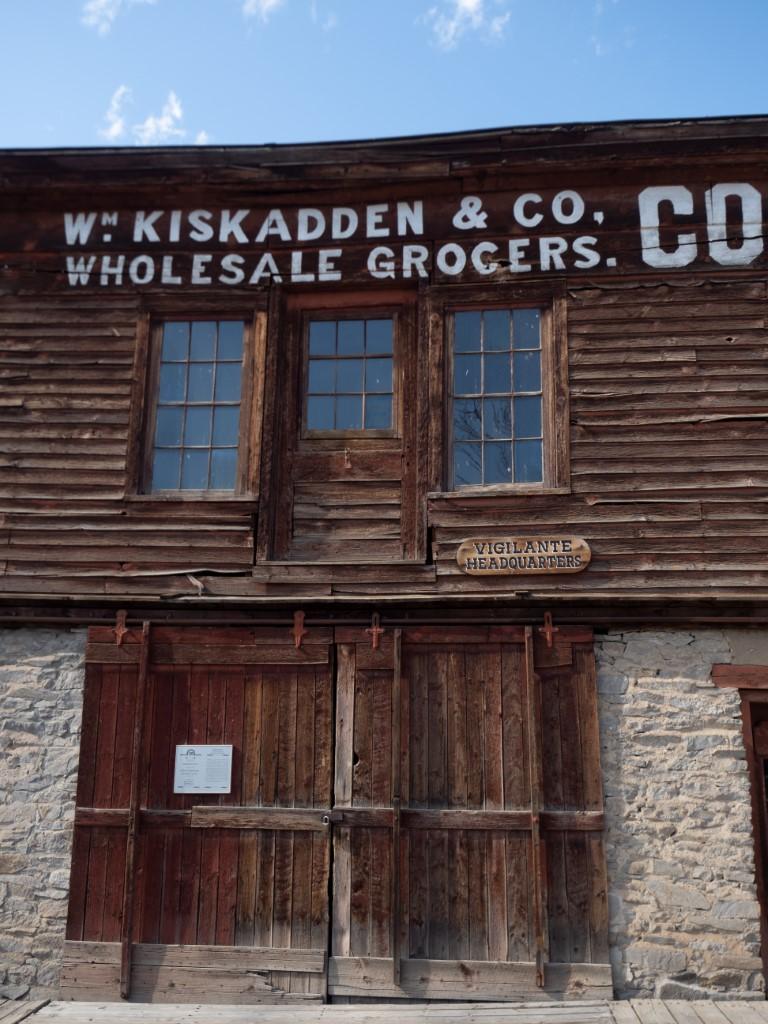
3-7-77 and the Freemasons
Many, if not all, original Vigilantes were Freemasons. John Ellingsen, a historian who worked with Charlie Bovey on Virginia and Nevada City restoration, believes 3-7-77 began with the Freemasons and continued with the Vigilantes.
“Three is the number of officers in a lodge. Seven is the number needed for a quorum. And 77 is the number of Freemasons, including the deceased, at the 1862 funeral for Brother William Bell,” Ellingsen said. Even though an official lodge had not yet been formed, members gathered to honor Bell’s wishes for a Masonic funeral with Nathaniel Langford, who came to Montana as part of the Fisk Expedition, presiding.
It may also be that resorting to a freemasonic code was done in order to circumvent the local constabulary. Since crime continued unabated following Sheriff Henry Plummer’s election in 1863, townspeople began to suspect Plummer and his handpicked deputies were on the wrong side of the law—a fact confirmed when a colleague of George Ives named names.
That was all the proof they needed. Vigilantes rounded up Plummer and his gang of Innocents and executed them all by the end of February 1864.
True law and order had fits and starts in Montana’s early days. The first territorial judge, Hezekiah Hosmer, an indecisive fellow, arrived in late 1864. Despite proper legal channels, a lack of confidence in the judge meant Vigilante justice of the no-trial variety continued. A posted 3-7-77 may have been a Vigilante call to meet—a message only those in the know could decipher—and a call for extra-legal justice.
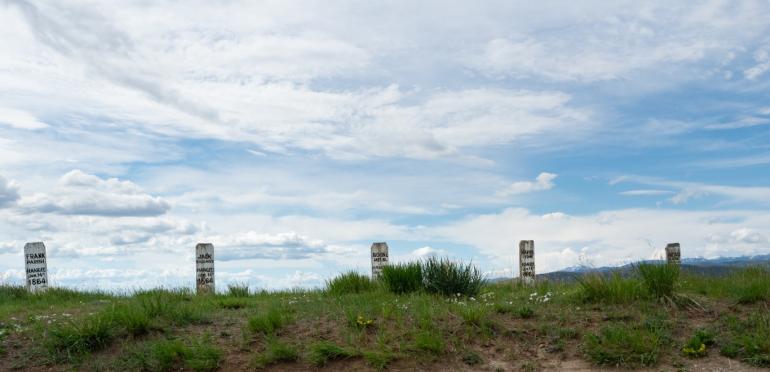
A Ticket to Leave
Frederick Allen, author of A Decent and Orderly Lynching, proposed another theory based on Robert E. Fisk’s editorial comments in the Helena Daily Herald in response to a murder in 1879.
Helena experienced an uptick in crime as unsavory characters arrived in Montana on the new railways. Fisk had this to say, in part: “Would it not be a wise precautionary step to invite some of these desperate characters to ‘take a walk,’ or shall we wait for other murders and robberies, or perhaps until they burn the town again?”
On November 1, 1879, 3-7-77 scrawled on fences and walls puzzled Helena residents. Two days later, Fisk’s column mentioned that the rough characters menacing Helena would be given a “ticket to leave.”
From this, Allen concluded 3-7-77 referred to a $3 ticket to leave Helena on the 7 a.m. stagecoach to Butte by order of a secret committee of 77.
Time’s Up
There’s no written proof of 3-7-77’s use before the Helena incident. Books written by early Vigilantes Thomas Dimsdale and Nathaniel Langford don’t mention 3-7-77 at all. But Montana Supreme Court Judge (and Freemason) Lew L. Callaway stated the symbol was used before 1879 as a warning to get out of town, specifically in 3 hours, 7 minutes, and 77 seconds. He knew Vigilantes firsthand, growing up in the company of the first Vigilante leader, Captain James Williams. Montana Vigilantes adopted the symbol from California Vigilantes who had used it for the same purpose. Interestingly, Callaway denied the Masonic link.
In Callaway’s 1973 book, Two True Tales of the Wild West, he said the running joke in the 1870s was that if a suspicious character found 3-7-77 written in charcoal on his tent flap, he’d say “Huh, I’ve got 3 hours, 7 minutes and 77 seconds to leave camp, have I? If you fellers will help me ketch [sic] my horse, the 77 seconds will be plenty for me. You can have the rest of the time.”
Rumor has it Callaway used it effectively himself, posting a sign with 3-7-77 and a call to meet when a group of vagrants landed in Virginia City in the 1890s. Once the signs appeared, the miscreants left town, problem solved.
Vigilante justice continued alongside legitimate law in the territory and even after Montana achieved statehood in 1889. A card with 3-7-77 was pinned to the back of Con Murphy, hanged in 1884 for his jail break. This was the first recorded use of the symbol associated with a lynching.
The last Vigilante lynching involved labor leader Frank Little in 1917. He, too, died with a 3-7-77 placard on his back.
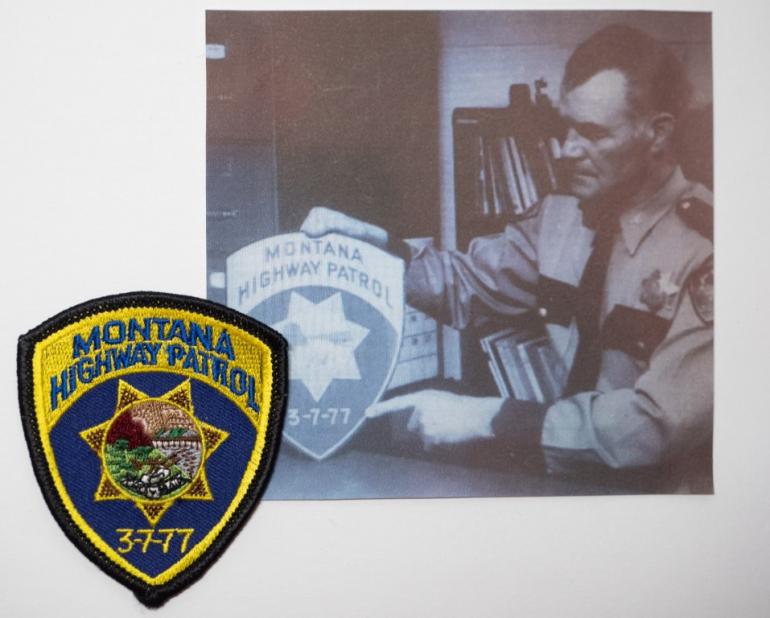
Montana Highway Patrol Adopts 3-7-77
Fast forward to 1956. Newly hired Montana Highway Patrol superintendent Alex Stephenson adopted 3-7-77 for the patrol’s logo as a tribute to the Vigilantes. “We chose the symbol to keep alive the memory of this first people’s police force,” Stephenson said. Having been stopped for doing 83 in a 70 miles per hour zone and not feeling compelled to ditch town to avoid a lynching, I can attest the symbol has lost any sinister meaning it may have had and has become a symbol of the police’s intent to serve and protect.
Numbers as symbols can take on new meaning over time. Just look at our 406 area code. It’s taken on a life of its own with Montana-proud souvenirs and memorabilia. When I googled “what does 406 mean,” “406 Angel Number” popped up first. New to me, I discovered 406 Angel Number stands for reliability, determination, self-sufficiency, nurturing, honesty, and a few more great descriptors any Montanan would be proud of. With documentation as it is today and the ease to search anything, it’s unlikely we’ll lose sight of the origin of 406 and its evolution to present-day Montana pride anytime soon. But in 150 years, maybe Montanans will trace their code to angelic beings.
As for 3-7-77—a mysterious code used by a group sworn to secrecy—. It was even enough of a deterrent to make outlaws keep riding, a dire warning of an impending date with the hangman.
If only my great-great-great grandfather’s walls could talk.
Leave a Comment Here
My mom's great-grandmother was Margaret Jerusha Byam, Don L. and Frances Byam's daughter. Not sure how many children Don and Frances had. Margaret married Theophilus Muffly. Their son, Charles Muffly, was my mom's grandfather. My mom had Don Byam's portrait hanging in her house in Billings — what a coincidence that Dr. Byam's photo would be in two homes in the city!


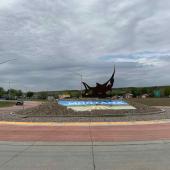









- Reply
Permalink